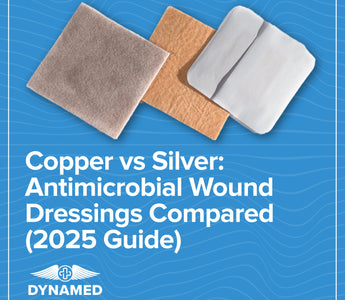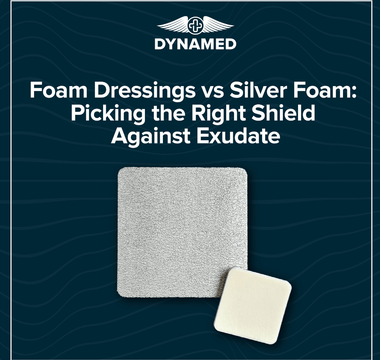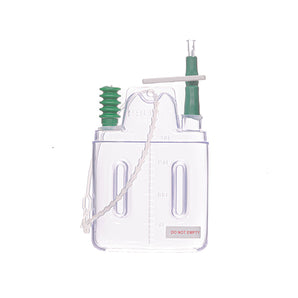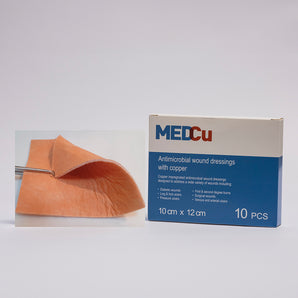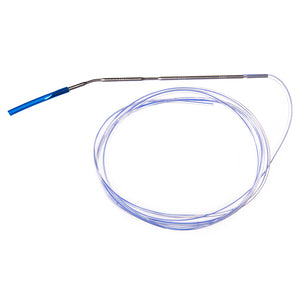Introduction
Antimicrobial wound dressings are a cornerstone of modern wound management, especially in South Africa where chronic wounds, burns, and surgical complications are prevalent. For years, silver wound dressings dominated the market. Now, copper technology - backed by CE and FDA clearance - is offering a new option for clinicians and procurement managers. But how do these two compare? This guide explores the strengths and limitations of copper vs silver wound dressings to help hospitals, clinics, and distributors make informed choices in 2025.
Key Points (Quick Takeaways)
- Antimicrobial wound dressings reduce bacterial load and speed up healing.
- Silver dressings remain trusted for infection control but have limitations in cost and resistance.
- Copper dressings (MedCu) add dual benefits: antimicrobial protection plus accelerated tissue healing.
- Both are essential in South African hospitals and clinics, but best used in different clinical scenarios.
- Procurement teams should stock a balanced mix to serve diverse patient needs.
Why Antimicrobial Wound Dressings Matter
Chronic wounds are a growing burden in South Africa due to rising rates of diabetes, burns, and trauma. Infections slow healing, increase hospital stays, and raise costs for both public and private healthcare systems.
Key Benefits of Antimicrobial Dressings
- Reduce microbial load in contaminated wounds.
- Lower infection risk post-surgery.
- Support faster recovery and shorter inpatient care.
Silver Wound Dressings: The Long-Standing Standard
How Silver Works
Silver ions disrupt bacterial cell walls, preventing replication. This makes silver broad-spectrum and effective against many wound pathogens.
When to Use Silver Dressings
- High-risk post-surgical wounds.
- Pressure ulcers with bacterial colonisation.
- Burns and chronic wounds with recurrent infection.
Limitations of Silver
- May delay epithelialisation in some cases.
- Higher cost for long-term use.
- Concerns about bacterial resistance over repeated exposure.
Copper Wound Dressings: The Emerging Innovation
How Copper Works
Copper ions also provide antimicrobial action but additionally stimulate angiogenesis (new blood vessel growth) and collagen formation, helping tissue regenerate.
MedCu Copper Dressings
MedCu is the world’s first CE and FDA-cleared copper dressing, distributed in South Africa by Dynamed. They combine antimicrobial safety with accelerated wound healing, making them unique in the advanced wound care market.
When to Use Copper Dressings
- Chronic wounds (DFUs, venous ulcers).
- Pressure ulcers with slow healing.
- Burns requiring both antimicrobial and regenerative support.
Copper vs Silver: Head-to-Head
Antimicrobial Power
Both silver and copper are broad-spectrum antimicrobials. Silver is proven across decades, while copper is showing comparable efficacy with added healing benefits.
Healing Support
- Silver: Focused primarily on antimicrobial action.
- Copper: Dual mode of action - antimicrobial + tissue repair support.
Cost and Supply
- Silver: More established, widely available, sometimes higher cost.
- Copper: Newer but increasingly accessible through certified distributors in South Africa.
Choosing the Right Dressing in South Africa (2025)
Clinicians and procurement managers should:
- Use silver dressings for acute infection control in surgical and hospital settings.
- Choose copper dressings for chronic wounds and cases where faster regeneration is critical.
- Balance stock based on patient profiles, infection prevalence, and budget.
- Leverage local suppliers like Dynamed for ISO-certified, tender-ready distribution across South Africa and the SADC region.
Conclusion
Silver wound dressings remain a trusted mainstay for infection control, but copper dressings bring a new dimension to wound healing by combining antimicrobial protection with tissue regeneration. In 2025, the smartest strategy for South African hospitals and clinics is not “silver or copper”, it’s both. Stocking a balanced range ensures patients get the right dressing at the right time, while procurement teams stay compliant, cost-effective, and prepared.
Dynamed Pharmaceuticals
Phone: 0861 00 00 43
Website: dynamed.co.za
Email (Sales): sales@dynamed.co.za
Email (Info): info@dynamed.co.za
Google Maps: Find us here
FAQs
1. What are antimicrobial wound dressings?
They are advanced dressings infused with agents like silver or copper that reduce bacterial load and speed healing.
2. How do silver dressings work?
Silver ions disrupt bacterial cell membranes, stopping them from multiplying and reducing infection risk.
3. What makes copper dressings different?
Copper dressings, such as MedCu, combine antimicrobial protection with stimulation of tissue regeneration, helping wounds heal faster.
4. Are copper dressings available in South Africa?
Yes. MedCu copper dressings are distributed by ISO-certified suppliers like Dynamed and are available nationwide.
5. Which is better for chronic wounds: silver or copper?
Copper dressings are often preferred for chronic wounds as they promote healing while controlling infection.
6. Should hospitals stock both silver and copper dressings?
Yes. Silver remains critical for acute infection control, while copper is ideal for chronic wound management. Stocking both ensures comprehensive care.

